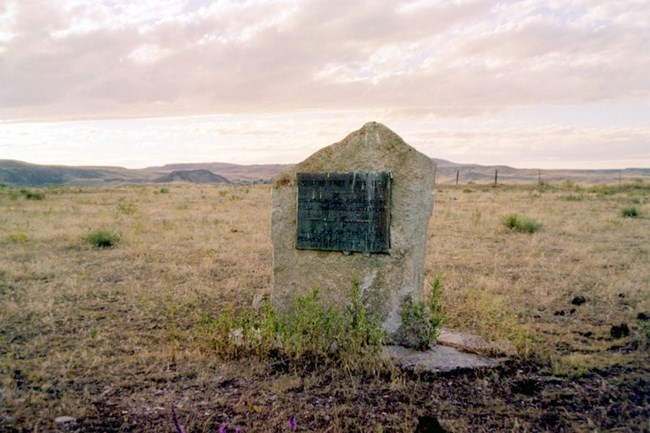
Fort Wiki The Bozeman Trail, from the beginning to the end of its relatively short history, was a scene of almost constant turmoil. In the eyes of the Sioux, especially the followers of Chief Red Cloud and their Cheyenne allies, the trail violated the Treaty of Fort Laramie. The Treaty had promised undisturbed hunting grounds to the Sioux and the trail traversed some of their most prized country. These warriors immediately saw to it that any white man on the Bozeman Trail was fair game. Settlers moving over the trail blazed by John Bozeman in 1864 traveled at their own risk. After the Civil War ended, the government started to take measures to protect emigrant trains. Efforts to secure another treaty with the Sioux and Cheyenne at Fort Laramie in June, 1866 ended with the untimely arrival of Colonel Henry B. Carrington with orders to construct forts along the Bozeman Trail. The angered tribesmen viewed this act as a virtual declaration of war and therefore left the council. The Army Is Called In Fort Reno, on the Powder River in north central Wyoming, was built first. This was followed by the construction of Fort Phil Kearney about eighty miles farther to the northwest. Two other forts were to be established at crossings of the Bighorn River and the Clarks Fork. By the end of July 1866, work on Fort Kearney had progressed enough to allow redeployment to establish a fort on the Bighorn River. A manpower shortage caused plans for a fort on the Clarks Fork to be abandoned. The War Department directed the post be named Fort C.F. Smith to honor Mexican War and Civil War hero Brigadier General Charles Ferguson Smith. Strategic Setting A spring was nearby and a good stand of pine for construction of the fort was located within three miles on Lime Kiln Creek. Work began immediately in obtaining pine logs, digging a trench, and making hay. Food for the livestock could be harvested 2.5 miles away, in a large natural meadow in the valley below. The Bozeman Trail passed along the southwest wall of the garrison, crossing the Bighorn River at the ferry, only 400 yards from the fort. Work was started on Fort C.F. Smith by fatigue parties and extra duty men on Captain Kinney’s battalion. The construction and fortification of the fort continued throughout the year and finally ceased in the late winter of 1867. A 260-wagon train came through on August 16th, but fear of Indian attacks brought traffic up the Bozeman Trail to a stop. Only one more wagon train passed in 1866. The high tide of emigration over the Bozeman Trail had passed before the fort was even firmly established. Click here to go to Fort C.F. Smith Part 2 - Harsh Winter And Dangerous Summer |
Last updated: March 16, 2022
